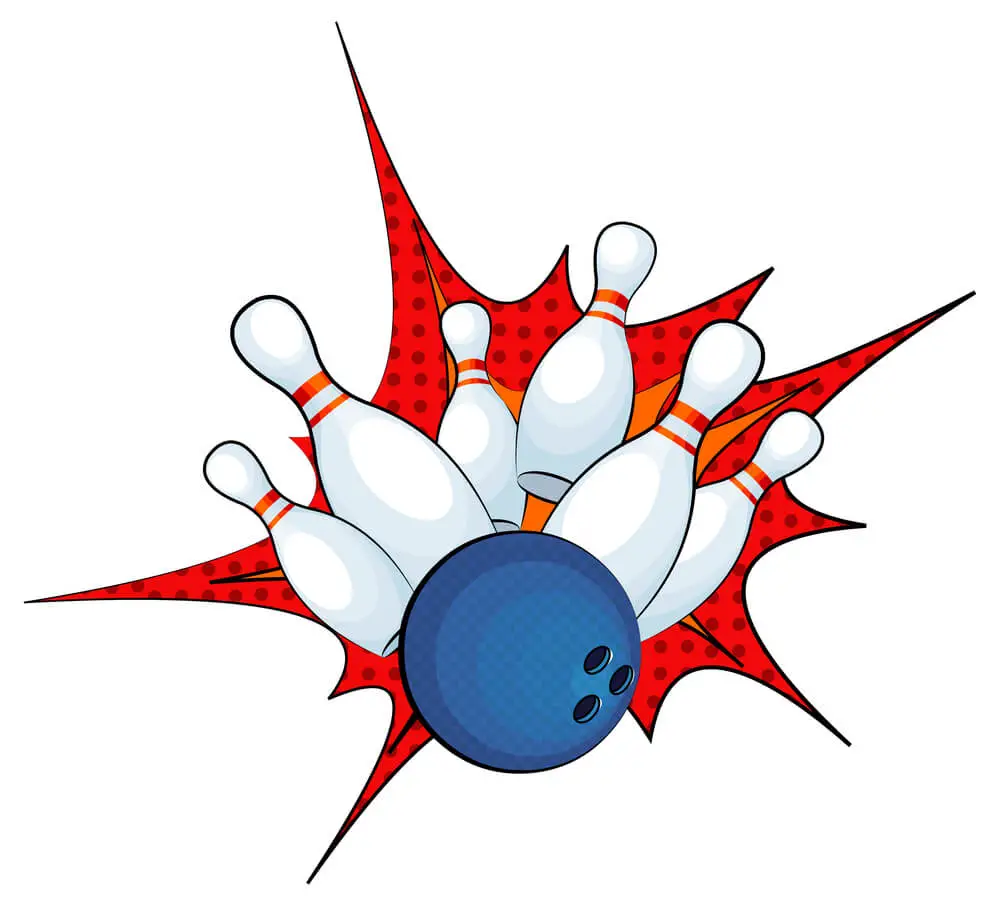There are many different types of injuries that can occur while bowling. Some of the most common injuries include:
• strains and sprains
– these occur when the muscles or ligaments are overstretched or twisted and can cause pain, swelling, and difficulty moving the affected area
• joint injuries
– such as dislocations, fractures, and cartilage damage
– these cause severe pain, swelling, bruising to the affected area
• pinched nerves
– which occurs when a nerve is trapped or pressed on by surrounding tissues or bone. This can result in numbness or tingling sensations.
• muscle tears and cramps
– these happen when the muscles are stretched too far, causing them to move away from the bone
– severe pain and muscle spasms are associated with these injuries.
• bursitis or tendonitis
– these are inflammations of the elbow, patella, or other areas where tendons or ligaments join bony surfaces. These can cause stiffness, swelling, bruising, and pain around the affected area.
If you experience any of these while bowling it would be advisable to see a doctor immediately. If you feel that your injury is serious, seek medical attention right away. However, if your injuries aren’t very severe here are some things you can do at home before seeing a doctor:
1) RICE method – rest (stop moving the injured area), ice (apply an ice pack for 20 minutes every two to four hours), compression (wrap the area with an elastic bandage or compression wrap), and elevation (raise the injured limb above heart level).
2) Take over-the-counter pain relief medication such as ibuprofen or acetaminophen.
3) Use a heating pad on low heat to help reduce swelling and pain.
4) Apply topical cream or ointment to help relieve inflammation and pain.
5) Wear a brace, sling, or ace bandage to restrict movement and protect the injured area.
6) Drink plenty of water and eat nutritious foods to help your body heal faster.
7) See a doctor if your injury doesn’t improve after a week.
8) Talk to a pro shop professional about protective equipment that can help prevent a re-injury.
9) Video your bowling technique and show it to a pro shop professional so they can teach you how to bowl with proper form. Videoing your play will also allow the pro shop professional to see if there is any way that the lane conditions or design could be causing an injury. This can be used as further evidence when telling someone who was injured from bowling what steps should be taken next.
10) Participate in physical therapy exercises before returning back to bowling. Physical therapy consists of stretching, resistance training, and movement patterns, all of which help recovery time by strengthening muscles and stabilizing joints throughout the body.
If you have any of these injuries, please consult with a doctor to see what is the best treatment for you. There are many different ways to treat these injuries, so don’t feel like you’re stuck with one option. Also, physical therapy is a great way to help speed up the healing process and prevent re-injury. Bowling can be a fun and enjoyable sport, but it’s important to stay safe while doing it. Wearing the proper protective equipment can help reduce your risk of getting injured. If you do happen to get injured, try using the RICE method and over-the-counter medication to help ease your pain. And finally, always consult with a professional before making any changes to your bowling technique.
How To Alleviate Shoulder Pain During Bowling?
Bowling is a very fun and exciting sport, but it can also be painful on your body. Shoulder pain is one of the most common injuries during bowling. If you are experiencing shoulder pain, it may cause some problems with your performance on the lanes. Here are some ways to help alleviate your pain:
1) Use a lighter bowling ball – This will help distribute the weight across your body better and relieve pressure from your shoulder.
2) Don’t use wrist straps – These actually end up putting more stress on the shoulder by increasing the force of the ball at impact.
3) Rotation stretch – Stand approximately six feet in front of a wall, facing away from it. Place arms against the wall at about waist height and lean forward, maintaining contact with the wall. Hold for 30 seconds and then repeat three times.
4) Door stretch – Place one arm through a doorjamb at shoulder height and slightly open the door. Bring the other arm across your chest and hold for 30 seconds. Repeat three times for each arm.
5) Arm circles – Standing with feet hip-width apart, slowly make large circles in the air with your arms. Do ten circles in each direction.
6) Foam rolling – Use a foam roller or tennis ball to massage the muscles around your shoulder joint. This will help increase blood flow and reduce tension in the muscles.
7) See a doctor or physical therapist – If pain persists after trying these techniques, it is advised to see a doctor or physical therapist.
Warmup Exercises and Tips to Avoid Common Bowling Injuries
Unless you are bowling on the professional circuit, it is likely that you will suffer some sort of injury at some point in your bowling career. It is important to understand the different injuries associated with bowling so that you can take steps to avoid these injuries and ensure they do not get worse. An ounce of prevention is worth a pound of cure! So here are some warm up exercises before bowling and ways to avoid common bowling injuries:
1) Get loose – Do about five minutes of general arm swings, shoulder circles (both directions), neck stretches (from all four sides), trunk twists (with both arms rotating), leg swings (front-to-back and side-to-side).
2) Start slowly – Slow down if the pace of your arm swing feels too fast.
3) Don’t overdo it – Do not try to win a race or test your limits by trying to bowl at full speed immediately. Give yourself time to gradually increase the pace of your arm swing as you warm up, and allow your body time to adjust to this new pace.
4) Stretch out – Sometimes going from sitting in front of a computer all day directly into a bowling league can result in a stiff back, neck, shoulders, and/or arms. So before heading down to the lanes for practice or league night it is important that you drink plenty of water and perform some light stretches. If possible, reduce sitting time before bowling as well as avoid slouching while sitting.
5) Use the right equipment – Make sure you are using the correct bowling ball for your weight and size. Also, be sure to adjust your bowling shoes to a comfortable height and use proper form when gripping the ball.
6) Take Breaks – When playing in tournaments or multiple games in a row, it is important to take breaks between frames and/or games. This will help your body recover and prevent injuries from occurring.
7) Get a physical – It is always a good idea to get a physical before starting any new sport or activity, especially if you have not been physically active in a while. This will help identify any potential health risks that could lead to injury while bowling.
8) Ice it down – If you do happen to get injured, apply ice to the affected area as soon as possible. This will help reduce the inflammation and pain.
9) Elevate it – If possible, elevate the injured area above heart level to help reduce swelling.
10) Use a compression bandage – Wrap a compression bandage around the injured area to provide support and help reduce swelling.
The most common injuries associated with bowling are:
1) shoulder pain
2) elbow pain
3) lower back pain
4) neck pain
5) wrist pain
6) thumb pain
7) ankle pain
8) knee pain.
Each of these injuries will be discussed in more detail below.
How Bowling Is Good for Your Health?
Each of these injuries is associated with bowling. However, it is important to note that not everyone who bowls will develop these injuries and many people may never experience any form of injury at all! Also, here are a couple of good things about bowling:
1) Bowling is a low-impact sport so this means you have a decreased risk of injury compared to other sports such as basketball or football.
2) You can enjoy batting for years on end because of the low physical strain bowling puts on your body.
Injury Checklist: What Do All These Injuries Have In Common?
1) Injuries can result from repetitive motion over time without proper rest. So make sure to take breaks in between frames or games when playing in a league.
2) Bowling injuries can be very painful and it is important to treat the pain as soon as possible after sustaining an injury.
3) You should also see a doctor if you have been injured because they may recommend rehabilitation exercises to help repair any muscle or joint damage.
4) Injuries may range from mild to severe depending on how much strain is put on the body so seek immediate medical attention if you experience any of the following symptoms: sharp pain, shooting pain down your arm or leg, numbness or tingling in your arm, hand, leg, or feet area, discoloration (bruising), swelling, trouble moving your fingers/arm/leg/feet.
Bowling Injuries: Shoulder Pain
The shoulder is a ball-and-socket joint that allows for a great range of motion. Bowling can put a lot of stress on this joint, which can lead to pain and injuries. The most common shoulder injuries associated with bowling are:
1) rotator cuff tear
2) bursitis
3) impingement syndrome
4) frozen shoulder.
Rotator cuff tear – This is the most common type of shoulder injury and occurs when the rotator cuff muscles and tendons become torn. Symptoms include pain, swelling, and difficulty lifting your arm.
Bursitis – This condition occurs when the bursa (a small sac filled with fluid that cushions the joint)
How many calories do you burn bowling?
This is the same as other sports in which you would use your large muscle groups. Bowling can be a great way to stay in shape and keep your weight in check.
Bowling is often referred to as “cheesy exercise.” This term was coined in the 1970s when bowling lanes were made of hardwood, balls were heavier than today’s lightweight plastic variety, and bowlers had more hook on their shots. The combination of these three factors made bowling a great workout. Today’s lightweight equipment allows bowlers to pick up the ball and throw it with little effort, which can make it seem like bowling isn’t that demanding of an activity. However, when you consider all the steps required in order for a bowler to be successful (approach, setup, release, follow-through), it is evident that bowling involves a number of large muscle groups and burns an average of 200 calories per game.
Is it Safe to Go Bowling Again during COVID-19?
A study found that bowling is not safe for patients with COVID-19. Patients of this virus had more pain and swelling compared to the control group after bowling, which means bowlers who have not properly healed should avoid the sport until their symptoms subside.
Injuries in Bowling
This article is about common bowling injuries and how to treat them when they occur. The main focus is to ease the pain of the injury, but it also talks briefly about preventing re-injury. There are many different treatments for each type of bowling injury, so always consult with your physician if you have any questions or if it does not seem like the injury is going away. Also, there are simple things that can be done, such as wearing a lighter ball and making sure you’re using proper form when bowling, that could potentially help prevent another injury from occurring in the future. Physical therapy exercises may help speed up recovery time





